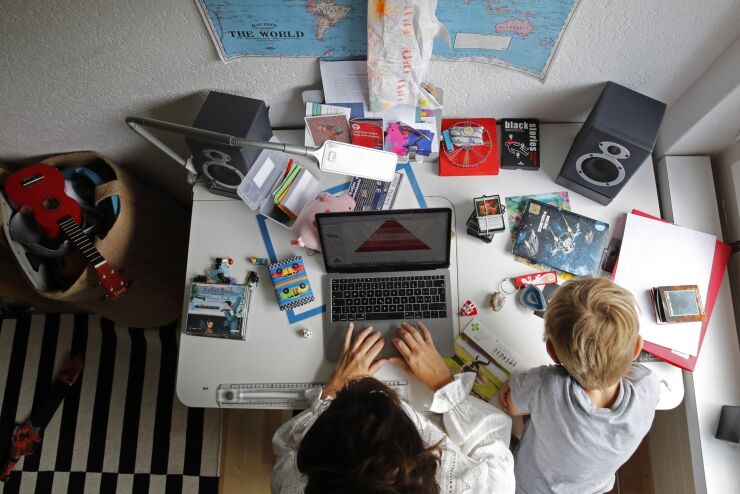What does an equitable workplace look like when all employees aren’t physically in the same workplace?
It’s a question companies have been grappling with, and it’s currently receiving renewed attention as the delta variant upends return-to-office plans across industries.
“If you’re working remote and I’m working in person, does that mean something different?” says Christie Lindor, founder of Tessi Consulting, an equity- and inclusion- focused consulting firm that launched in February 2020 and counts such companies as LinkedIn and Skillsoft as clients. “We’re starting to see a lot of organizations question their ideals and searching to find a middle ground to make sure that they can meet market demands while redefining their culture to suit a hybrid world.”
In a recent discussion with EBN, Lindor outlined the ways that businesses should consider creating equitable working environments for all employees, how to empower their workers to speak up about the culture they want to work within — and how managers must lead by example.

We’re obviously not going back to a traditional way of working anytime soon. How much are your clients thinking about creating equitable workspaces for employees, whether they’re working in the office or from home?
What’s interesting is that, regardless of where people are, there’s a lot of misunderstanding of what equity actually means. So I spend a lot of my time trying to educate our clients and leaders on equity — and what’s the difference between equity and equality, and why is that so important?
Read more:
How do you help them understand that distinction?
I usually just start with definitions of each, but equality is tattooed in everyone’s minds because there’s legislation around it. Equity is trickier to grasp. I like to explain I this way: At any venue, look at the men’s and women’s restrooms. There are five stalls in each, right? That’s equality. But the engineers that created these designs didn’t think about varying social needs. And that’s why it’s always an express line to the men’s bathroom, and the women’s bathroom line is out the door. And that’s not equitable.
So what’s the risk in terms of equity as we approach a permanent state of hybrid work?
There’s a little bit of an “othering” that’s happening, where if you work remote versus in-person, there’s a sort of value being attached to the way you either commute or don’t commute to work. That value doesn’t have anything to do with your skills and what you contribute and bring to the table. The fact that Google is cutting pay for remote workers — I find that fascinating. You’re putting value on a person’s commute rather than their contributions. And that brings a lot of cultural implications to the company.
How can leaders do a better job of creating equity?
It’s really about being intentional about upholding certain cultural values. And it will require an additional layer of effort to keep remote workers and in-person workers engaged. For example, I just had a meeting with one of my teams, and we are all vaccinated and were planning to gather in person, but two women on the team said they just weren’t comfortable being in the office yet. So during that meeting, we made sure that we created space for those women: What do you think, Linda? Susan, what’s your input? Make those opportunities for interaction for remote workers.
Read more:
We’ve seen a lot of organizations embracing new tech tools and AI programs to help level the playing field between remote and in-person staff. How valuable can those tools be?
Lead inclusively and empathetically first. Don’t lead with the technology. Employees that are younger in tenure can really get lost in this shuffle, and it also disproportionately affects women and people of color. So you do need a leader to make sure that equity is front and center in decisions and actions.
We’re of course in this crazy talent market — how does hiring and onboarding get impacted by a hybrid workplace, and how can you make cultural values clear to new employees who work remotely?
It’s easy for employees to follow suit, so again, this is about leaders setting an example. Because if it’s clear that equity is a value, employees will not just have self-agency, but also be an ally. If they notice, for example, that Rebecca who works from home keeps getting left off the meeting invite, they can speak up. A lot of companies change processes and communicate to their staff, but they don’t incentivize people to change behavior. And old habits creep back in. So this is about changing habits, company-wide.






